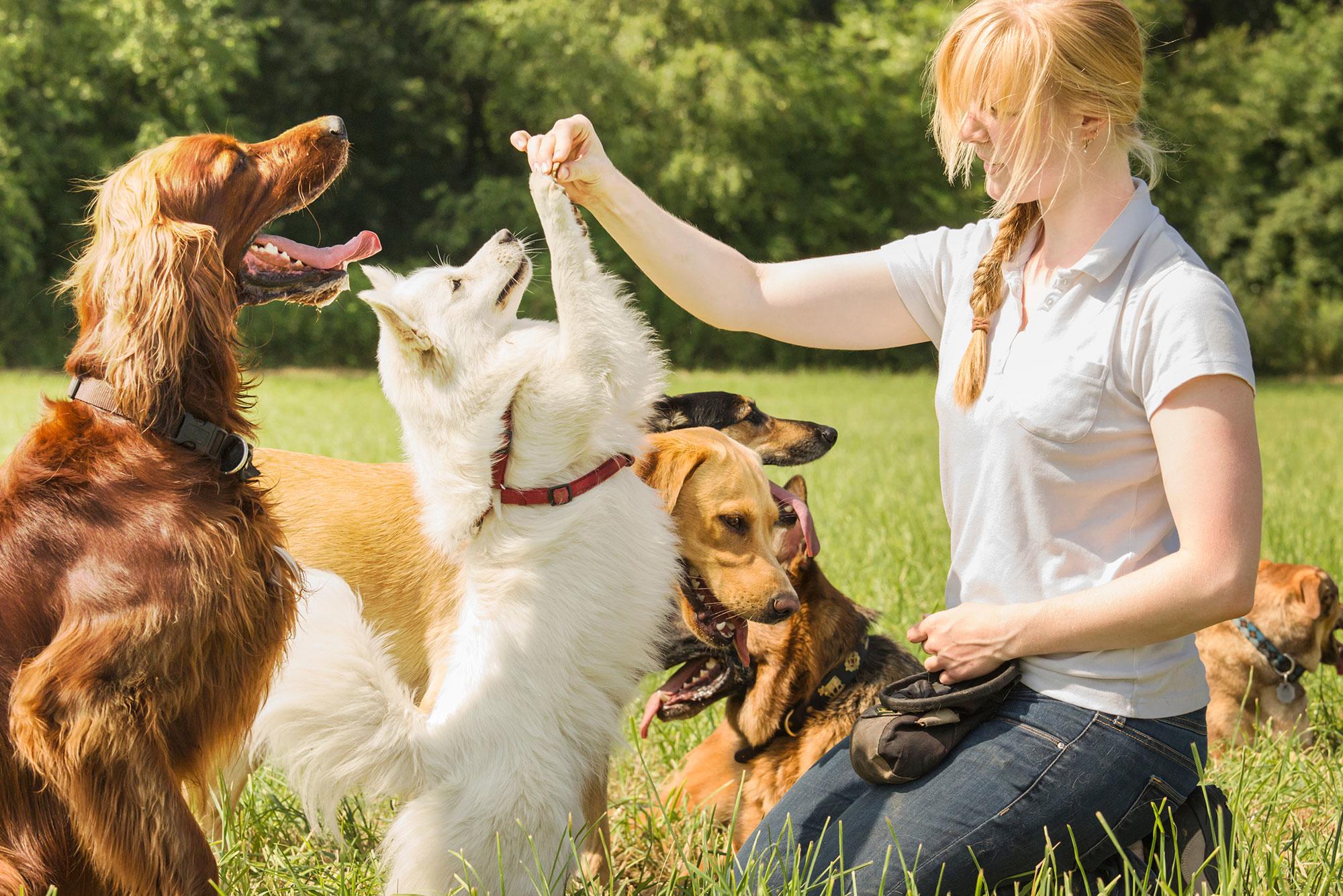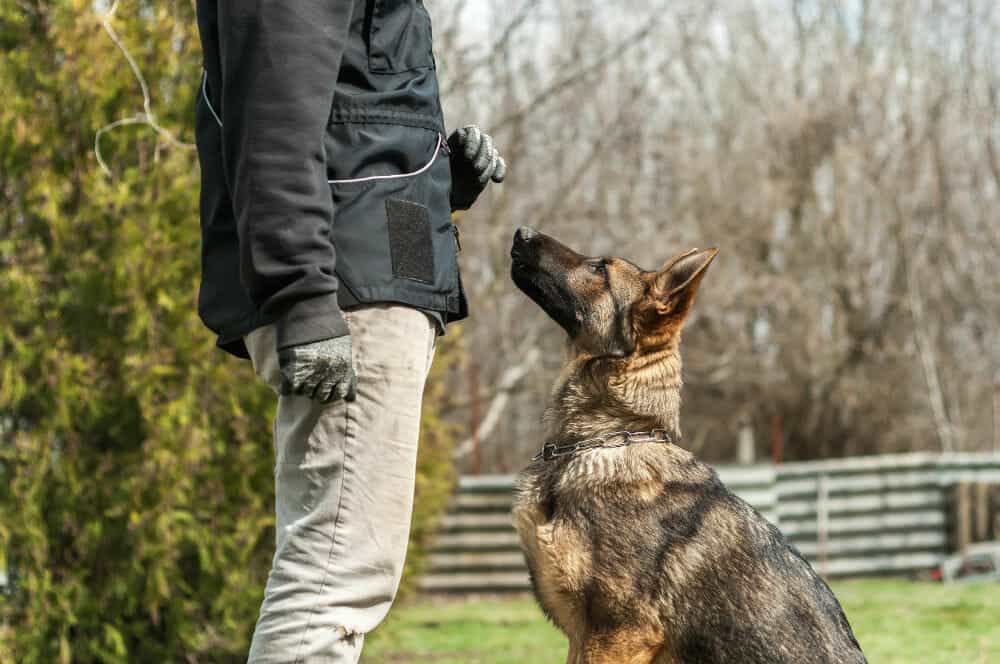Change Your Family Pet with These Specialist Dog Training Tips
Change Your Family Pet with These Specialist Dog Training Tips
Blog Article
Important Tips for Effective Dog Training: An Overview for Animal Owners
Effective canine training is a complex procedure that requires a strategic strategy tailored to both the pet's personality and the owner's purposes. Comprehending exactly how to browse these challenges can considerably enhance the training experience, eventually changing the connection in between owner and pet dog.
Recognizing Dog Behavior
Comprehending pet behavior is essential for reliable training and cultivating a harmonious relationship between canines and their proprietors. dog training. Pets communicate mainly with body language, articulations, and actions, making it vital for proprietors to interpret these signals accurately.

Socialization plays a considerable function in canine habits; exposure to various atmospheres, individuals, and other animals can substantially influence a pet dog's character. Moreover, elements such as type features and specific character must assist training approaches, as some types might have certain behavioral qualities that require customized techniques. By recognizing these components, owners can develop a helpful environment that encourages favorable actions, leading to successful training outcomes and a much deeper bond with their pet dogs.
Developing Consistent Commands
Efficient communication with your dog starts with establishing constant commands. This foundational aspect of training is vital for promoting understanding in between you and your animal. Uniformity in the commands you use makes certain that your canine can accurately associate details words or phrases with the preferred actions.
When choosing commands, pick clear, unique words that are very easy to distinguish and state from each other. Prevent utilizing similar-sounding commands that may puzzle your pet. Using "sit" and "remain" is appropriate, but "rest" and "hit" might lead to misconceptions.
Additionally, preserve the exact same tone and quantity for each and every command. Dogs are sensitive to vocal signs, so varying your tone can create confusion.
It is equally important to guarantee that all relative get on the exact same page concerning the commands used. A united front in command use will certainly stop combined signals and reinforce the learning procedure.
Favorable Reinforcement Strategies
The power of positive reinforcement in pet training hinges on its capability to encourage desired behaviors via benefits and praise. This strategy is grounded in the concept that habits adhered to by positive end results are a lot more most likely to be duplicated. By integrating positive reinforcement right into your training program, you can efficiently form your canine's behavior in a constructive way.
To execute favorable reinforcement, it's necessary to determine what motivates your pet dog, whether it be treats, playthings, or spoken appreciation. When your dog does a desired activity, such as remaining on command, quickly award them with a treat or affection. This organization between the command and the favorable result strengthens their understanding.
It's vital to timing the rewards properly; supplying the support within seconds of the wanted behavior assists your dog make the connection (dog training). Furthermore, consistency is vital-- guarantee that all household participants utilize the very same commands and reward systems to stay clear of confusion

Progressively, you can reduce the frequency of deals with as your pet finds out the habits, transitioning to applaud or recurring rewards. This method not only cultivates a strong bond between you and your pet dog yet additionally promotes a favorable discovering atmosphere, making training an enjoyable experience for both.
Socialization and Interaction
Continually exposing your canine to a selection of environments, people, and other animals is crucial for their social advancement. Socializing needs to start early, preferably throughout the critical window of 3 to 14 weeks, when puppies are most receptive to new experiences. Older dogs can also benefit from continuous socializing efforts.
Introduce your canine to different settings, such as parks, pet-friendly stores, and city locations. This direct exposure assists them adapt to numerous stimuli, decreasing anxiety and concern responses. Motivate positive communications with other pets and people, ensuring that these encounters are secure and regulated to promote confidence.
Make use of organized playdates with courteous pet dogs, as this can enhance your pet's social skills and teach them proper behavior. Obedience courses and training sessions additionally supply exceptional chances for socialization, allowing your pet to communicate with others in a supervised setting.
Screen your dog's body movement throughout interactions, as this will help you gauge their comfort degree. Gradually raise exposure to more challenging scenarios while guaranteeing that each experience is favorable. A well-socialized canine is most likely to display well balanced habits, making them a joy to have in any type of setup.
Addressing Usual Training Challenges
Every pet owner will certainly experience training obstacles eventually, despite their pet's age or socialization level. Determining usual problems such as stubbornness, distractions, and fearfulness can assist in creating reliable techniques for improvement.

Disturbances throughout training sessions can derail focus. To fight this, start have a peek at these guys training in a peaceful atmosphere with very little stimuli. Gradually introduce diversions as the pet dog comes to be extra skillful in commands. Short, frequent training you can look here sessions are also effective in maintaining attention.
Terror can prevent a pet's learning process. Steady desensitization to the resource of anxiety, combined with favorable support, can assist relieve anxiety. Persistence is vital; never require a canine into a scenario that triggers distress, as this may exacerbate the concern.
Inevitably, understanding and resolving these typical challenges with an organized technique will certainly cultivate a much more productive training experience, reinforcing the bond between dog and proprietor while promoting effective understanding.
Final Thought
In recap, effective dog training depends on a thorough understanding of canine habits, the facility of constant commands, and the application of favorable reinforcement techniques. Socialization plays a vital role in creating well-adjusted animals, while resolving typical training obstacles needs patience and versatility. By implementing these necessary techniques, pet dog proprietors can promote a solid bond with their canines and advertise desirable habits, inevitably causing a harmonious connection in between humans and their canine buddies.
Recognizing canine actions is important for efficient training and cultivating a harmonious connection in between canines and their owners.Socializing plays a significant role in pet behavior; direct exposure to various environments, individuals, and other pets can considerably affect a dog's character.The power of positive reinforcement in pet training lies in its capacity to urge desired behaviors with explanation benefits and praise. By integrating favorable support right into your training routine, you can efficiently form your pet dog's actions in a positive fashion.
In recap, successful canine training counts on an extensive understanding of canine habits, the establishment of constant commands, and the application of positive support methods.
Report this page